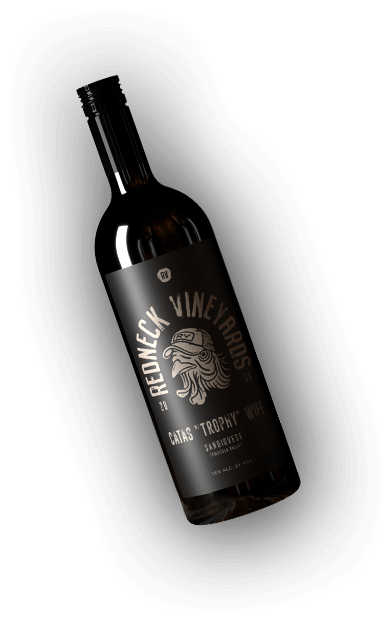Uncategorized
How to Identify Wine Flavor Profiles
It’s amusing to imagine a snooty wine expert dramatically inhaling, slurping, and pondering over a glass of wine before proclaiming it to taste like blackberries in the nose with an old leather couch on the finish. But don’t believe that this represents an accurate image of a wine lover identifying the flavor profiles of wine! Yes, sniffing and sipping are involved, along with identifying fruit flavors, but it’s all quite fun, and there’s no right or wrong.
Whether you’re getting ready to attend a tasting session at a winery, want to thoughtfully sample a variety of wines at home, or hope to navigate the menu at your local wine bar, it helps to be familiar with the basics of wine flavor profiles. The good news is that all the knowledge you need to describe the flavor profiles of wine is already in your head, and the only tools necessary are your innate senses.
Wine Tasting for Beginners
At its most basic, identifying the flavor profiles of wine simply means smelling and sipping a glass of wine and then describing the flavors you experience using whatever terms or comparisons come to mind.
Don’t underestimate the importance of aroma. The nose can discern thousands of scents, and every wine releases its own unique and complex set of aroma compounds. Before sipping, gently swirl the wine in the glass to release those aromas, and stick your nose right into the glass to take a big sniff.
Sip a wine slowly, letting it coat your tongue before swallowing, and be mindful of the taste sensations during and after the sip. The second and third sips might evoke flavors you didn’t notice with the first taste. Consider the flavors that come to mind and whether or not you find them pleasant. With more experience and after tasting a wider range of wines, you’ll be able to identify more complex and subtle wine flavor profiles. Ultimately, this will help you figure out your favorite flavor profiles, making it easier to select the most delicious bottles of wine.
While figuring out some of your favorite wine flavor profiles, look at the offerings from Redneck Vineyards.
Fruits Are Key to Wine Flavor Profiles
Fruits are the most commonly referenced comparisons in the flavor profiles of wine. It’s funny because grapes are rarely mentioned, but it seems like wines can remind tasters of every other imaginable fruit! Some types of fruit are more commonly identified in wine flavor profiles. These are readily categorized to fit red wines and white wines.
Red Wine Fruit Flavors
Red wine fruit flavors are mostly those appearing on the red and purple side of the color spectrum. Wine experts divide them into red and black fruit and berry flavors. Blended red wines often feature fruit flavors from both categories.
Red fruit flavors typically feature in the flavor profiles of Pinot Noir, Grenache, Merlot, and Sangiovese. They include cherry, raspberry, strawberry, cranberry, pomegranate, red plum, and goji berry. Black fruit and berry flavors feature more full-bodied reds such as Cabernet Sauvignon, Malbec, Tempranillo, and Syrah. Fruits in this flavor category include blackberry, black currant, raisin, and blueberry. More complex assessments might describe the fruits in red wine flavor profiles as juicy, jammy, tart, or rich.
White Wine Fruit Flavors
The fruit flavors in white wine flavor profiles are roughly categorized as tree fruits or citrus fruits. The particular fruit flavors described in white wines, even those made from the same type of grape, can vary considerably by climate and growing region. Tasters often reference the ripeness of the fruit or even mention flavors of fruit preparations like key lime pie, lemon meringue, or canned peaches.
The tree fruit category, including the sub-category of stone fruits, includes flavor notes of apricot, peach, nectarine, apple, and pear. Wines often featuring tree fruit flavors include Sauvignon Blanc, Moscato, and Viognier. Apple, a common fruit flavor in chardonnay, might be more specifically described as green, yellow, red, or baked apple. For example, golden apples are prominent in the flavor profile of Sweet Oaks 2017 Chardonnay.
Citrus flavors include lemon, Meyer lemon, lime, and red or pink grapefruit. These often define Riesling, Pinot Grigio, and Semillon, among other whites. Sometimes a citrus flavor is more zesty than juicy. Tropical fruits such as kiwi, mango, melon, pineapple, and passion fruit can also make up elements of white wine flavor profiles.
What About Oaky Flavors?
Oak is one of the most commonly identified non-fruit elements of a wine’s flavor profile. It’s quite a divisive flavor note, with most wine drinkers either loving or hating a strong oakiness. Oak flavor in a glass of wine is entirely due to fermenting and/or aging in oak barrels. It can be akin to clove, cinnamon, nutmeg, or allspice and often imparts a vanilla flavor to the wine. Occasionally it comes with a hint of smokiness or bitterness and sometimes a richness that reminds tasters of caramel or toffee. Vanilla and toasty flavors are prominent in the flavor profile of Sweet Oaks Chez Boujie – Crème De La Crème 2019 Chardonnay, for example, along with ripe peaches.
If you dislike oak in a flavor profile, look for wines made in stainless steel casks that eliminate oakiness.
Buttery Flavors in Wine
When wines are described as buttery, this can refer to the aroma and flavor of a specific compound (diacetyl, if you’re curious) and a soft, velvety mouthfeel. The combination, used commercially in artificial butter flavoring, is a natural byproduct of fermentation in particular wines. Buttery wines remind you of buttered popcorn. Sweet Oaks 2019 White Blend “All About Me” and 2017 Chardonnay “Gold Digger,” included in the Flight Club Bitch Box, have distinct buttery notes in their flavor profiles.
Other Elements of Wine Flavor Profiles
Herbal flavors are often present in wine flavor profiles, usually alongside fruits. You might taste a hint of tarragon or mint, for example. Likewise, you might notice mint along with cocoa and jammy red fruits in the complex flavor profile of Sweet Oaks 2018 Deluzional Syrah Blend.
Spices are also identifiable in many wines, whether they’re broadly spicy or have specific spice flavors like peppercorn, cinnamon, or cardamon. Floral aromas might evoke rose petals or honeysuckle. The latter features in the flavor profile of Sweet Oaks 2020 Pinot Grigio, balanced by the slight acidity of lemon and green apple. Some wines remind tasters of delicious bakery goods like creme brulee, buttermilk biscuits, or ingredients like cocoa, nuts, or confectioner’s sugar.
Most amusing are the non-edible flavors sometimes used to describe a wine’s flavor profile. For example, tobacco, leather, and woodsy scents like cedar — anything that reminds you more of an aftershave commercial than wine — result from aging and are therefore more typical of older wines.
Are you wondering about tannins, acidity, sweetness, or alcohol level? While those are all important in the wine world and useful to know, they’re technically considered basic wine traits rather than flavors.
Ready to I.D. Wine Flavor Profiles?
Describing wine flavor profiles is as simple as saying out loud what wine’s taste and smell remind you. This will be different for everyone, and you can get as poetic and imaginative as you like! Remember, the real purpose isn’t to impress anyone — it’s to figure out the flavors you like so you can enjoy the most delicious wines.
There’s almost certainly one among the wines offered by Sweet Oaks!



